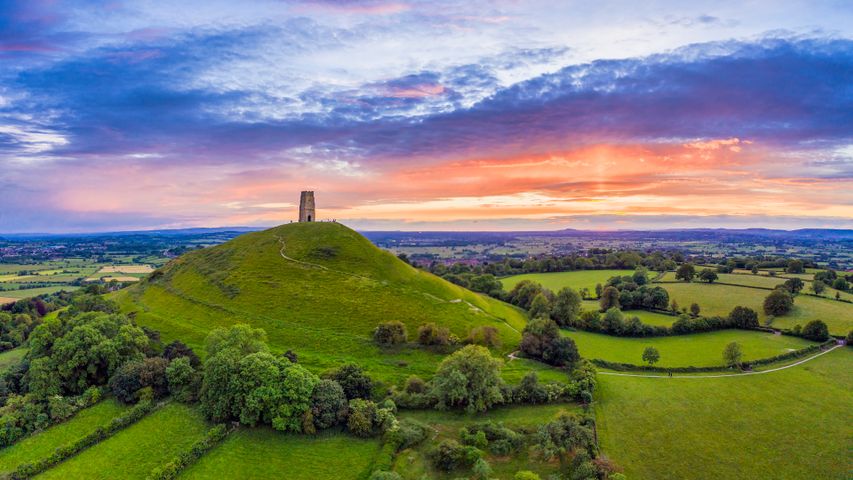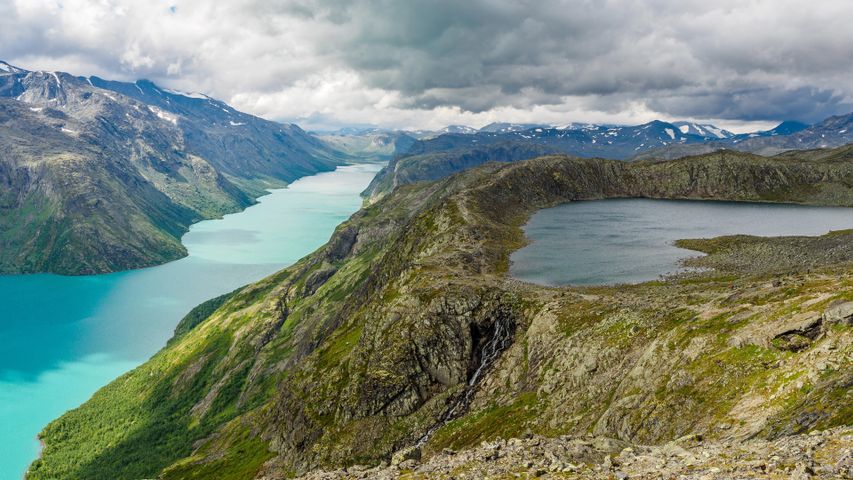Moose crossing a pond below Mount Moran, Grand Teton National Park, Wyoming
© Jim Stamates/Minden Picture
Through an artist's eyes
If this beautiful view of Grand Teton National Park seems as pretty as a painting, there may be a reason for it. That majestic peak towering over the landscape is Mount Moran, named for Thomas Moran, an American artist of New York's Hudson River School who earned fame by painting scenes of the western frontier. In 1871, Moran and photographer William Henry Jackson were invited on an expedition to the Yellowstone region to accompany a team from the US Geological Society while they conducted the first comprehensive survey of the area. Moran's paintings and Jackson's photographs from the trip immediately captured the public's attention and inspired Congress to establish Yellowstone as the first national park in 1872.
For the next two decades, Moran painted hundreds of landscapes of the Yellowstone region, producing indelible images of this spectacular wilderness that would come to define the American West in the imaginations of many. The area had such an impact on Moran that he adopted the signature T-Y-M, Thomas 'Yellowstone' Moran. He returned to the area in August 1879 on an expedition to the Teton Range, just south of Yellowstone National Park. He never made it as far into the mountains as he'd hoped, but gazing up at the towering peaks, he wrote in his diary, 'From this point, it is perhaps the finest pictorial range in the United States or even N. America.' Judging from this image, it's hard to argue with him.
Related Images
Bing Today Images


 St. Michael's Church Tower on Glastonbury Tor, Glastonbury, Somerset, England
St. Michael's Church Tower on Glastonbury Tor, Glastonbury, Somerset, England
 Amazon rainforest, Ecuador
Amazon rainforest, Ecuador
 Cinque Torri, Dolomiti, Cortina d’Ampezzo, Belluno, Veneto, Italy
Cinque Torri, Dolomiti, Cortina d’Ampezzo, Belluno, Veneto, Italy
 Chisos Mountains, Big Bend National Park, Texas, United States
Chisos Mountains, Big Bend National Park, Texas, United States
 Miravet on the Ebro river, Tarragona, Catalonia, Spain
Miravet on the Ebro river, Tarragona, Catalonia, Spain
 Jotunheimen National Park in Norway
Jotunheimen National Park in Norway
 Mount Hamilton, San Francisco Bay Area, California, United States
Mount Hamilton, San Francisco Bay Area, California, United States
 Torres del Paine National Park, Patagonia, Chile
Torres del Paine National Park, Patagonia, Chile



